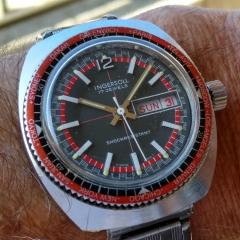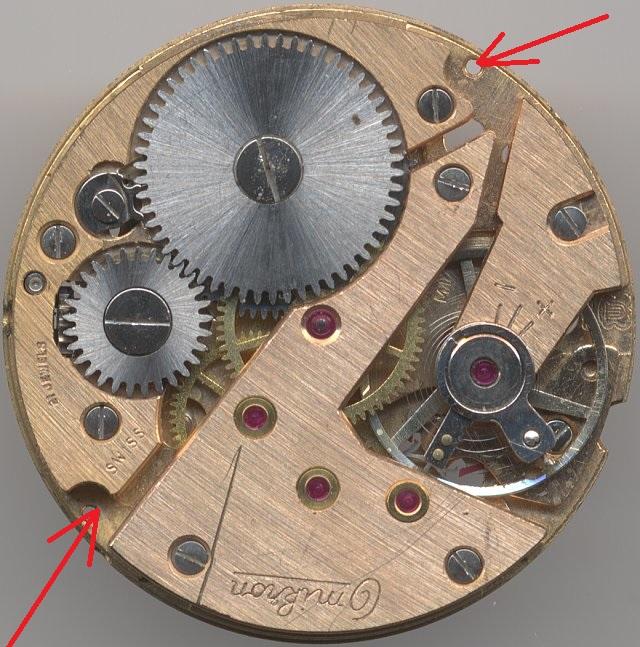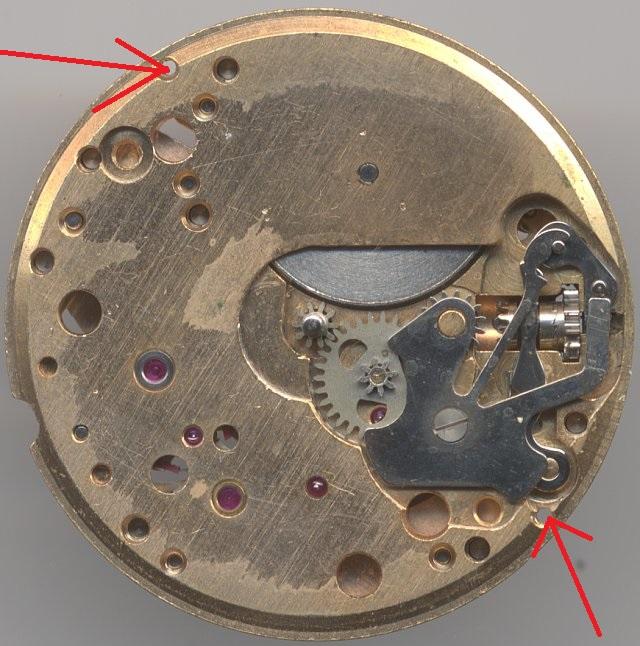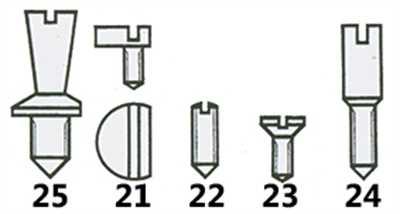Leaderboard
Popular Content
Showing content with the highest reputation on 08/08/19 in all areas
-
It's easiest to see the shake if you hold the arbor ends between the inside of some tweezers. In the pic above the cap does look like it's a bit concave, which might be killing the endshake. If you find it has none, you can press down on the barrel perimeter, with the barrel assembled, like you were going to pop the cap off- but hold the edges so it just flexes up. This can bend it up slightly creating shake.5 points
-
Never in a thousand years would I have come up with the idea to drive an “annealed iron” into a watch movement to solve my problem, but in desperation, I tried this idea, and lo and behold, it worked! Sing Hallelujah! By removing the balance cock and the train wheel bridge I could get a good view of the dial feet and the dial screws. The dial screws had been screwed in so forcefully that they had deformed the dial feet into a concave shape. I’m surprised the slots of the dial screws could survive such extreme abuse, but of course, the slots were in very bad shape too. However, I could see zero traces of glue. Using my stereomicroscope, I dressed up a screwdriver to fit one of the slots the best I possibly could. I then heated up a paper clip having approx. the same diameter as the dial screw hole under candlelight (not best heat source) until it was glowing red and then quickly shoved it into the dial screw hole and pressed it against the screw. After having cooled off for a few minutes I tried unscrewing but feeling how the remains of the slot were beginning to give in I paused, thinking this must surely be a hopeless case. Anyway, at this point I thought it could possibly help, although I had very little hope at this point, to repeat the “paper clip trick” a few times but only try unscrewing after the last heating/cooling cycle. The idea was that this would repeatedly nudge the screw. So, the last attempt, thinking “all or nothing”, deep breath, and miracles of miracles the screw came loose! I repeated the process with the second dial screw and it too came loose. At this point, I ran out to our living room, where my wife and daughter were watching some TV show, made a victory dance and explained what I had just managed. My wife and daughter rolled their eyes and continued watching the TV show. So, I’m extremely grateful for your tips, and encouragement to be patient. Thank you!3 points
-
2 points
-
Yes, and be sure to push it from the cap jewel side. The pivots are trumpet shaped and the other side is likely larger in diameter, which could crack the jewel if forced.2 points
-
Hello, I am new here, so want to say hi to all of you. Starting a 3 year watch repair corse in September, so I will be here more than once to find some solutions... ;-) I am also a watch collector. ;-) Greetings, Koen1 point
-
What you call bezel is the chapter ring. The bezel may seem one part with the case but isn't. If you look around the seam with a loupe it may have a small reces to start prying. Otherwise work around it with a blade like an ☓acto knife. Once you have some light continue with a case back knife.1 point
-
Today, I am running on "railway time". This was one of a pair of early Timex Quartz watches I picked up recently. I liked the dial as it looked a little different. It arrived dead as a door nail, with a very scratched up crystal and some minor lug damage, with no pins and no strap. When I turned it over I spotted "B.R." stamped on the back. For those not familiar with this, BR was "British Rail", the name of the national Railway company prior to quasi privatization in 1997. The UK still subsidizes the rail network from general taxation to the tune of around £ 5Bn per annum, so this is not a truly private enterprise, only the profit has been privatized. Apparently Timex watches were issued to train drivers and guards, so this is almost certainly a well traveled watch. I would guess from the construction, that this is probably from the early to mid eighties.1 point
-
Hi Have you tried fitting the barrel and bridge on their own and testing for shake and freedom if there is no end shake it will need further investigation as to why.1 point
-
1 point
-
The antique winders seem to never really work well. The modern ones work a bit better. I'm a professional and wind 90% in by hand, and defy anyone to look at two springs, one wound in by me by hand and one by winder, out of barrel, and tell which is which. Winding in by hand does take skill though. In some cases a winder is really the only good way to do it.1 point
-
To check the barrel endshake, push on one side of the arbor first, it should move as you push on the otherside next.1 point
-
Pad printing has been around in some form for ages, I always figured the fine-lined dials were done this way even way back. Large clock dials were often done by hand. There's some good yt vids on pad printing dials.1 point
-
1 point
-
They used first silk-print method then pad-print method I guess. I've done test silk-printing but I still need to train a BIG lot. If you want to reprint a dial search for "sunnyscopa film-free waterslide decal paper" on the web. Design your dial with Photoshop or Illustrator, mirror print on a film-free decal paper and follow the instructions. Great method !!! Mark showed it on one of his tutos. I'm waiting for a gold 14000 Air-King dial that needs some repair (minute track has badly faded). I'll shoot some pics along the repair process and post it on the forum. Envoyé de mon moto g(7) power en utilisant Tapatalk1 point
-
I bought a Rios1931 bund strap from UK . I bought a Bund from cousinsuk . But didn't like it. To hard and not the best quality.1 point
-
If the pallets are undamged and only dislocated ,"moved in the fork slot" they can be adjusted. Our knowledgable guest @nickelsilver did help a member fix such fault, you can find the post among his work. There is also a video put out by ETA showing the proceedures. I personally do a good job of messing up adjusting pallets. Best Regards joe1 point
-
1 point
-
Just remember the endstones are to reduce friction. In pivots without them the shoulders rub the face of the jewel, and even if the shoulder surface is reduced to the max the surface is still way more than a rounded pivot end. Better quality pieces will have convex jewels to reduce the surface touching, best quality goes all the way to end stones. They are rarely encountered on forks though so can understand the confusion.1 point
-
As OldHippy stated above I have learned(self taught) to use a tiny amount of oil on a couple escape wheel teeth and nothing more.1 point
-
Thanks to you I learned, have never face endstones on fork arbor, didn,t know. Best wishes1 point
-
If you're handling delicate steel parts, brass tweezers are safer because they're softer than steel and won't mark the components.1 point
-
Well I would definitely start with Moebius 9010 (for train wheels and balance endstones) and 9020 (for train wheels) if you are working on Pocket Watches. Moebius 9415 is a must for Pallet/Escape wheel teeth. A quality silicon grease. Moebius D5 is essential (barrel arbor, motion work). Molycote DX or Moebius 9501 grease for keyless work. Moebius 9501 or 9504 for high friction (e.g. Cannon pinion, Setting lever spring and anything at high friction). Moebius 8200 grease for mainspring. Moebius 8217 for barrel wall (automatic watches) It's a lot but at a minimum get 9010, 9415, D5 and 8200 I hope this helps. Recommended Lubricants for Getting Started.pdf Moebius_Oil_Chart.pdf1 point




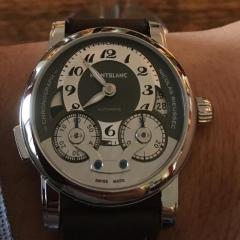


.thumb.jpg.0118dd86f88377d3d7b1bd89a91d2c92.jpg)
.thumb.jpg.1f427aa541c6e3ea504fa17932f8f521.jpg)
.thumb.jpg.208545bb0844e0d7e5f672bb1b18de0d.jpg)
.thumb.jpg.ad343266649af7f45ce2c030cbb87bb3.jpg)
